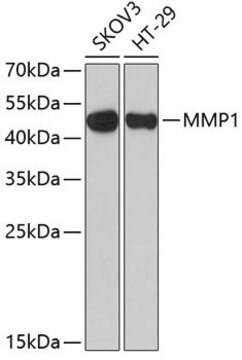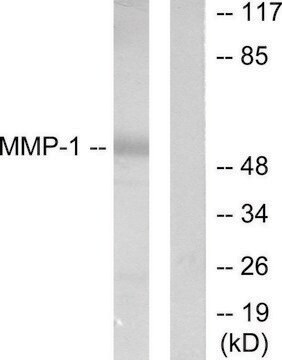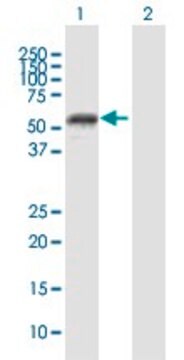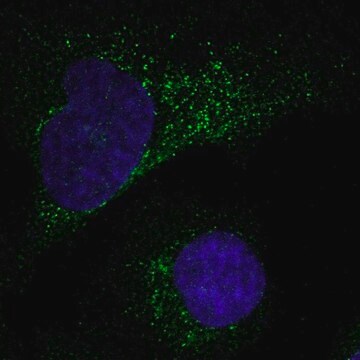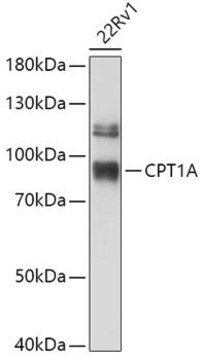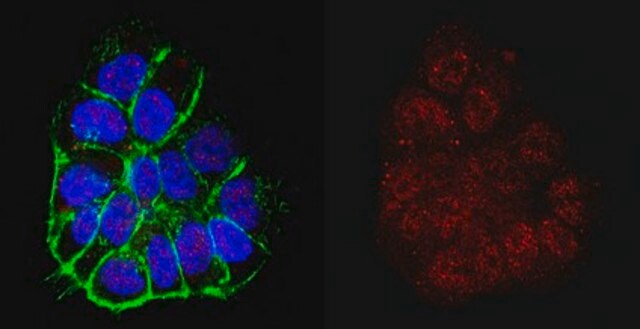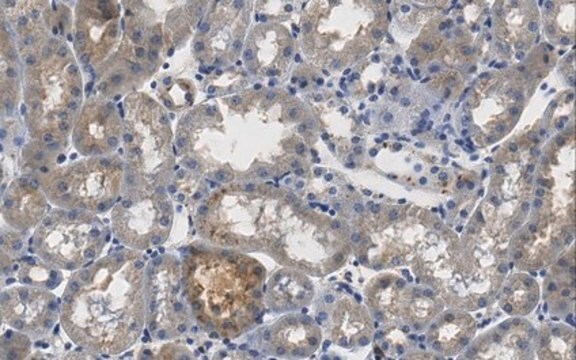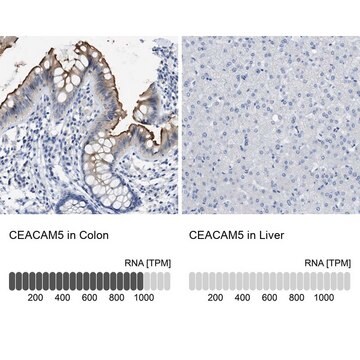IM35
Anti-MMP-1 (Ab-1) Mouse mAb (41-1E5)
liquid, clone 41-1E5, Calbiochem®
About This Item
Produtos recomendados
fonte biológica
mouse
Nível de qualidade
forma do anticorpo
purified antibody
tipo de produto de anticorpo
primary antibodies
clone
41-1E5, monoclonal
Formulário
liquid
contém
≤0.1% sodium azide as preservative
reatividade de espécies
human
não deve reagir com
bovine
fabricante/nome comercial
Calbiochem®
condição de armazenamento
OK to freeze
avoid repeated freeze/thaw cycles
Isotipo
IgG2a
Condições de expedição
wet ice
temperatura de armazenamento
−20°C
modificação pós-traducional do alvo
unmodified
Informações sobre genes
human ... MMP1(4312)
Descrição geral
Imunogênio
Aplicação
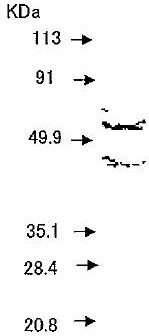
Frozen sections (see application references)
Immunoblotting (1 g/ml)
Paraffin sections (2.5 g/ml, pressure cooker pre-treatment required)
Embalagem
Advertência
forma física
Reconstituição
Outras notas
Stetler-Stevenson, W.G., et al. 1993. FASEB7, 1434.
Zhang, J., et al. 1993. Clinica Chimica Acta.219, 1.
Woessner, J.F. 1991. FASEB5, 2145.
Liotta, L.A. and Stetler-Stevenson, W.G. 1990. in Seminars in Cancer Biology, ed. M. M. Gottesman. Vol. 1; 99-106.
Informações legais
Não está encontrando o produto certo?
Experimente o nosso Ferramenta de seleção de produtos.
Código de classe de armazenamento
12 - Non Combustible Liquids
Classe de risco de água (WGK)
WGK 2
Ponto de fulgor (°F)
Not applicable
Ponto de fulgor (°C)
Not applicable
Certificados de análise (COA)
Busque Certificados de análise (COA) digitando o Número do Lote do produto. Os números de lote e remessa podem ser encontrados no rótulo de um produto após a palavra “Lot” ou “Batch”.
Já possui este produto?
Encontre a documentação dos produtos que você adquiriu recentemente na biblioteca de documentos.
Nossa equipe de cientistas tem experiência em todas as áreas de pesquisa, incluindo Life Sciences, ciência de materiais, síntese química, cromatografia, química analítica e muitas outras.
Entre em contato com a assistência técnica